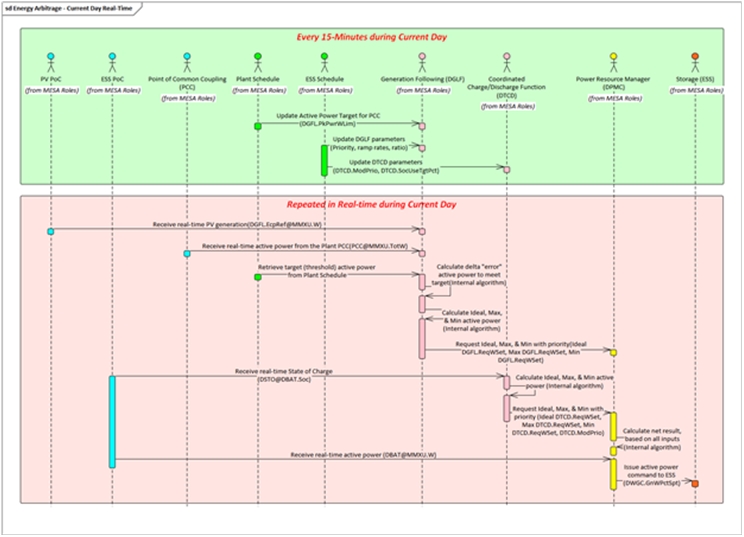MESA Use Cases and
Examples of Using MESA-DER
MESA Use Cases provide examples of how best to use the MESA-DER Specification for achieving your goals. Do you need to Limit Active Power Export? How do you respond to Set Active Power at the PCC? Do you want to engage in Energy Arbitrage while still meeting other requirements? How can Schedules be used? What about bidding into the provision of ancillary services for the ISA while still meeting the IEEE 1547-2018 requirements?
Why MESA?
Grid-connected DER and energy storage systems benefit the electric power industry and all electric users, from the smallest residential customers to the largest industrial plants.
Communications are critical for managing grid-connected DER, and standardized communication specifications are therefore key to the deployment of large numbers of DER and ESS across all grids worldwide.
MESA standardized communication specifications clear barriers to this critical need for interoperability.
Through standardization of communication specifications, MESA accelerates interoperability, scalability, safety, quality, availability, and affordability in distributed energy resources (DER), in particular energy storage systems (ESS) and their components.
Set Active Power Use Case
Set Active Power (aka Charge/Discharge) is a very basic function for Energy Storage Systems (ESSs) (or any other DER) in which the ESS is requested to charge or discharge at a specific rate or at a specific percentage of maximum discharge (WMax), either through direct commands or via a schedule for specific times and durations.
Variations of this function could include the DSO issuing a command for requiring a specific active power value or a minimum active power value to be exported at the PCC. The Generating Facilities could determine what active power levels to set the different DER units, or could have the ESS “follow” the PV systems to compensate for PV variations so that this requirement is still met at the PCC.
Limit Active Power Export Use Case
Based on near-real-time power assessments, the DSO issues an Export Limit schedule or command, containing start day and time, duration, and export limit value in watts, to one or more Generating Facilities individually, on a feeder, or in a region. Start day and time could be immediate or in the future. Once the command has expired or been canceled, the Generating Facilities return to their normal limits, including scheduled limits. The commanded export limit takes precedence over the scheduled export limit.
Energy Arbitrage Use Case
Energy arbitrage is the shifting of energy production from lower price to higher priced times, and the corresponding shifting of energy use from higher price to lower priced times.
In wholesale energy markets enabled by energy storage devices, energy arbitrage refers to purchase of energy when the prices are low and resale of purchased energy when the prices are high. In the distribution system, energy arbitrage is exercised by the utility through tariffs that depend on the time of day and encourage consumers to shift their energy use from higher priced times to lower priced times.
It is therefore important to state that the Energy Arbitrage Use Case described in this document refers more to the use of energy storage devices to shift energy from one time of day to another and is thought to be the primary use case for energy storage devices especially when combined with a renewable energy source.

